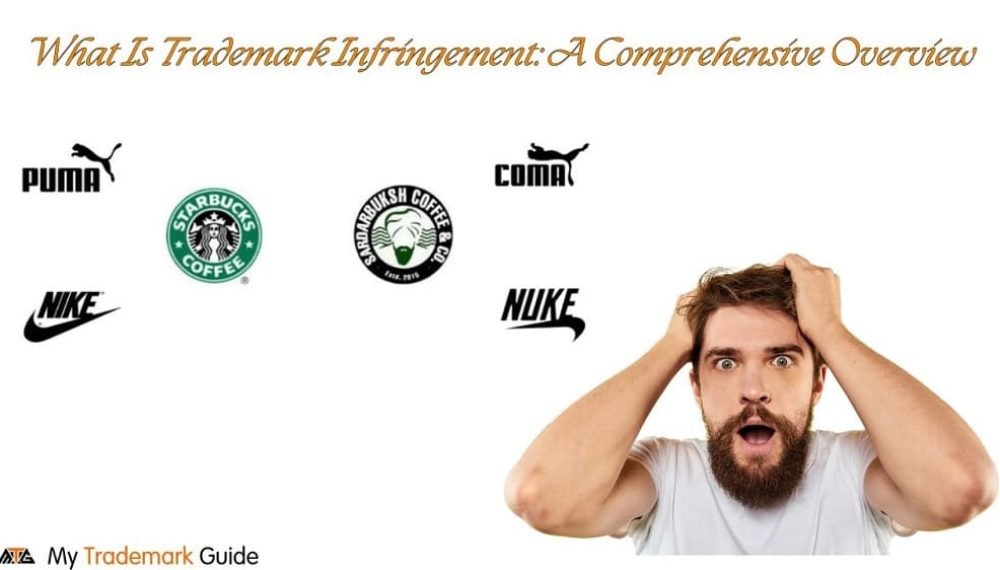What Is Trademark Infringement: A Comprehensive Overview

Introduction
In today’s highly competitive business environment brand identity plays a very crucial role in a business success. Brands are built over time often through the consistent use of logos, slogans, symbols or names that set a business apart from those of others. These unique identifiers are protected by trademarks giving the owner exclusive rights to use them. However, when someone uses a trademark without permission or something that is confusingly similar, it leads to trademark infringement.
This article delves into the basics of what is trademark infringement covering why it’s important, different forms it can take and how businesses can protect their brand from potential trademark infringement.
Understanding What Is Trademark Infringement
Trademark infringement occurs when a party without permission uses a trademark that is substantially similar or identical to an already existing trademark or brand. This unauthorized use usually causes confusion among consumers making them believe that the goods or services they are purchasing come from a different company or are endorsed by the trademark owner.
For example: A small company begins using a logo that looks very similar to the logo of a well-established brand. If customers mistakenly associate the two brands it is considered trademark infringement.
Key Components of Trademark Infringement
There are three essential components that typically make up a case of trademark infringement:
- Use of a Trademark: The infringing party must be using a trademark in connection with selling or marketing goods or services. This could include logos, brand names, slogans or even distinct packaging styles that are synonymous with the trademark owner’s brand.
- Similarity Between Marks: The infringing trademark must be similar enough to the registered trademark that it causes confusion among consumers. The degree of similarity is often the central issue in determining a case of trademark infringement.
- Consumer Confusion: The hallmark of trademark infringement is the likelihood of consumers confusion. Courts often focus on whether consumers might mistakenly believe that the infringing products or services are affiliated with, endorsed by, or originate from the trademark owner.
Why is Trademark Protection Important?
Trademarks are more than just symbols or words they represent a company’s reputation and goodwill. They assure customers of a consistent level of quality and authenticity associated with a brand. If another business uses a similar or identical trademark or attempts to ride on the goodwill of an established brand then it can damage the original brand’s reputation and customer trust.
Without proper trademark protection businesses risk losing the distinctiveness of their brand. Failure to protect a trademark from infringement can also result in loss of sales, market share and customer loyalty.
Forms of Trademark Infringement
Trademark infringement can take various forms some of which may be more apparent than others. Below are a few of the most common types of trademark infringement scenarios:
- Direct Trademark Infringement: This occurs when someone uses a trademark that is identical or similar to an existing one, leading to customer confusion. For example, if a new shoe company starts selling products with a logo that looks almost identical to Nike’s swoosh that would be direct trademark infringement.
- Contributory Infringement: In some cases, businesses or individuals may not directly infringe on a trademark but may help or induce someone else to do so. If a third party knows about the infringement and still contributes to it, such as by manufacturing counterfeit goods, they could be liable for contributory infringement.
- Dilution: Unlike confusion-based infringement, dilution does not require that consumers are confused between two brands. Instead, it focuses on the idea that the value of a famous trademark is diminished or “diluted” by the unauthorized use of a similar mark. For instance, using the brand name “Coca-Cola” for unrelated products like shoes may harm the original brand’s uniqueness, even if customers aren’t confused about the source.
- Counterfeiting: Counterfeiting involves creating a fake version of a product and passing it off as the original. Counterfeit goods are typically inferior in quality and their sale can significantly harm the reputation of the authentic brand. Well-known examples include knock-offs of designer bags or watches sold as though they are genuine.
Legal Framework for Trademark Infringement
Trademark laws vary from country to country, but the basic principles are consistent across most jurisdictions. The purpose of these laws is to protect the rights of trademark owners while ensuring fair competition. In India, trademark laws are defined under the Trade Marks Act, 1999. These acts outline the rules for registration, protection and enforcement of trademarks.
To succeed in a trademark infringement case, the trademark owner typically must prove that:
- They have a valid and legally protected trademark.
- The defendant used a mark similar to the plaintiff’s trademark in commerce.
- The defendant’s use of the mark causes a likelihood of consumer confusion.
Defences Against Trademark Infringement Claims
Infringement cases aren’t always clear-cut and several defences can be used to argue against claims of infringement. Here are some common defences:
- Fair Use: The fair use doctrine allows others to use a trademark in specific circumstances. For instance, descriptive fair use occurs when a term is used in its ordinary descriptive sense and not as a trademark. Nominative fair use allows someone to use another company’s trademark to refer to the trademark owner’s actual products or services (e.g., mentioning “Apple” in a product review).
- Lack of Confusion: The defendant may argue that their use of the trademark is so different that it is unlikely to cause confusion among consumers. For instance, if the marks are used in entirely different industries or geographical regions, this could be a strong defence.
- Abandonment: A trademark owner must actively use the mark to maintain rights to it. If a trademark is not used for an extended period, it may be considered abandoned allowing others to use it.
- Invalidity of the Trademark: The defendant can claim that the plaintiff’s trademark should not have been granted in the first place. This could be due to a lack of distinctiveness, a failure to meet the registration requirements or that the trademark has become generic over time (e.g., “escalator”).
Consequences of Trademark Infringement
The consequences of trademark infringement can be severe for both the infringer and the trademark owner. Trademark owners risk losing market share, diluting their brand’s value and experiencing reputational damage. Meanwhile those found guilty of infringement may face:
- Injunctions: Courts may issue an injunction forcing the infringing party to stop using the mark immediately. This may lead to costly rebranding efforts for the infringer.
- Damages: In some cases, the infringing party may be required to pay financial compensation to the trademark owner. This can include the plaintiff’s lost profits, the infringer’s profits or statutory damages.
- Legal Fees: The losing party in a trademark lawsuit may be ordered to cover the winning party’s legal costs which can be significant especially in long drawn-out cases.
- Destruction of Infringing Goods: Courts may order the destruction of infringing products, especially in counterfeiting cases. This can be financially devastating for businesses involved in counterfeit operations.
How to Avoid Trademark Infringement
For businesses and entrepreneurs, it’s essential to avoid infringing on someone else’s trademark, whether intentionally or unintentionally. Below are best practices to be kept in mind:
- Conduct Thorough Trademark Searches: Before adopting a new brand name, logo or slogan, conduct a trademark search to ensure that the proposed mark isn’t already in use. In many jurisdictions, this can be done by checking the trademark registry but it’s also important to check common law trademarks that may not be officially registered.
- Register Your Trademark: By registering a trademark, businesses gain exclusive rights to use their brand identifiers and can more easily enforce those rights if infringement occurs.
- Seek Legal Advice: Consulting with a trademark registration expert can help businesses navigate the complex world of trademarks, ensuring that their branding does not infringe on the rights of others. Legal professionals can also assist in responding to cease-and-desist letters or in defending against infringement claims.
Conclusion
By protecting trademarks, companies preserve their brand identity, customer trust and market share. While infringement can occur in many forms such as direct infringement, dilution or counterfeiting; the key concern is often whether consumers are likely to be confused by the use of a similar mark.
By understanding what constitutes trademark infringement, businesses can take proactive steps to protect their trademarks and avoid infringing on the rights of others. Whether you’re a business owner looking to safeguard your brand or someone who needs to enforce your trademark rights, understanding the legal implications of trademark infringement is essential for navigating today’s business landscape.
Frequently Asked Questions (FAQs)
Trademark infringement occurs when someone uses a trademark, logo, name, or symbol that is confusingly similar or identical to an existing trademark without permission, leading to consumer confusion about the source of goods or services.
Signs of trademark infringement include discovering similar logos, names, or symbols being used by competitors, receiving customer complaints about confusion between your brand and another, or finding counterfeit versions of your products on the market.
The most common types include direct infringement, contributory infringement, dilution (when the value of a famous trademark is diminished), and counterfeiting (selling fake goods under a known brand name).
You can protect your trademark by registering it with relevant authorities, monitoring the market for any unauthorized use, sending cease-and-desist letters, and taking legal action if necessary.
Consumer confusion is central to trademark infringement cases. If consumers are likely to mistakenly believe that the infringer’s goods or services are associated with, endorsed by, or originate from the trademark owner, it constitutes infringement.
It depends. If the trademarks are used in entirely different industries and there is little chance of consumer confusion, it might be permissible. However, this should be approached cautiously, and legal advice is recommended.
Consequences of trademark infringement include injunctions (forcing the infringer to stop using the mark), payment of damages, covering legal fees, and possibly the destruction of infringing goods, especially in counterfeiting cases.
Common defenses include fair use (descriptive or nominative use), lack of confusion, abandonment (if the trademark hasn’t been used for a long time), and invalidity of the trademark (e.g., the trademark should not have been granted).
While not required, registering your trademark provides stronger legal protection and easier enforcement. In some jurisdictions, you may also be able to protect unregistered trademarks under common law, but this can be more challenging.
Trademark infringement focuses on consumer confusion, while trademark dilution occurs when the value or uniqueness of a famous trademark is weakened, even without consumer confusion, typically through unauthorized use in unrelated industries.




